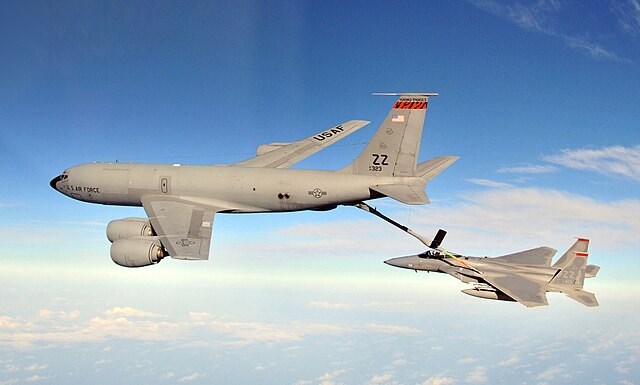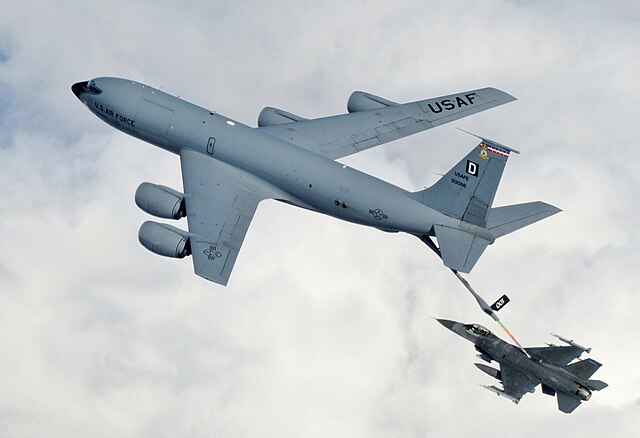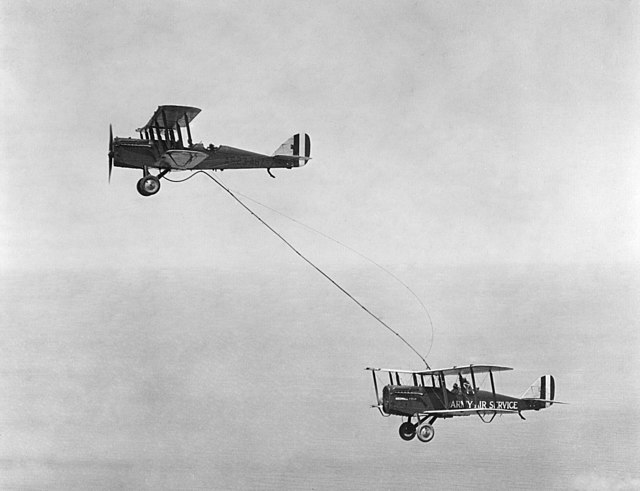Boeing KC-135 Stratotanker
The Boeing KC-135 Stratotanker is an American military aerial refueling tanker aircraft that was developed from the Boeing 367-80 prototype, alongside the Boeing 707 airliner. It has a narrower fuselage and is shorter than the 707. Boeing gave the aircraft the internal designation of Model 717. The KC-135 was the United States Air Force (USAF)'s first jet-powered refueling tanker and replaced the KC-97 Stratofreighter. The KC-135 was initially tasked with refueling strategic bombers, but it was used extensively in the Vietnam War and later conflicts such as Operation Desert Storm to extend the range and endurance of US tactical fighters and bombers.
Boeing KC-135 Stratotanker
A KC-135A refueling a B-52D during the Cold War. Both aircraft types were operated by the Strategic Air Command.
On 11 November 1957, Air Force Vice Chief of Staff General Curtis LeMay tested the first KC-135 on a long-haul flight from Westover Air Force Base, Massachusetts to Buenos Aires, Argentina.
A nose-on view of several re-engined KC-135R aircraft taxiing prior to takeoff. The new engines are CFM56-2 high-bypass turbofans.
Aerial refueling, also referred to as air refueling, in-flight refueling (IFR), air-to-air refueling (AAR), and tanking, is the process of transferring aviation fuel from one aircraft to another while both aircraft are in flight. The two main refueling systems are probe-and-drogue, which is simpler to adapt to existing aircraft, and the flying boom, which offers faster fuel transfer, but requires a dedicated boom operator station.
A KC-135 Stratotanker refuels an F-16 Fighting Falcon using a flying boom
Capt. Lowell Smith and Lt. John P. Richter receiving the first mid-air refueling on 27 June 1923
The US Air Force Boeing B-50 Superfortress Lucky Lady II being refueled by grappled-line looped-hose during the first non-stop circumnavigation of the world by air (1949)
Dutch Air Force KC-10 refueling boom








